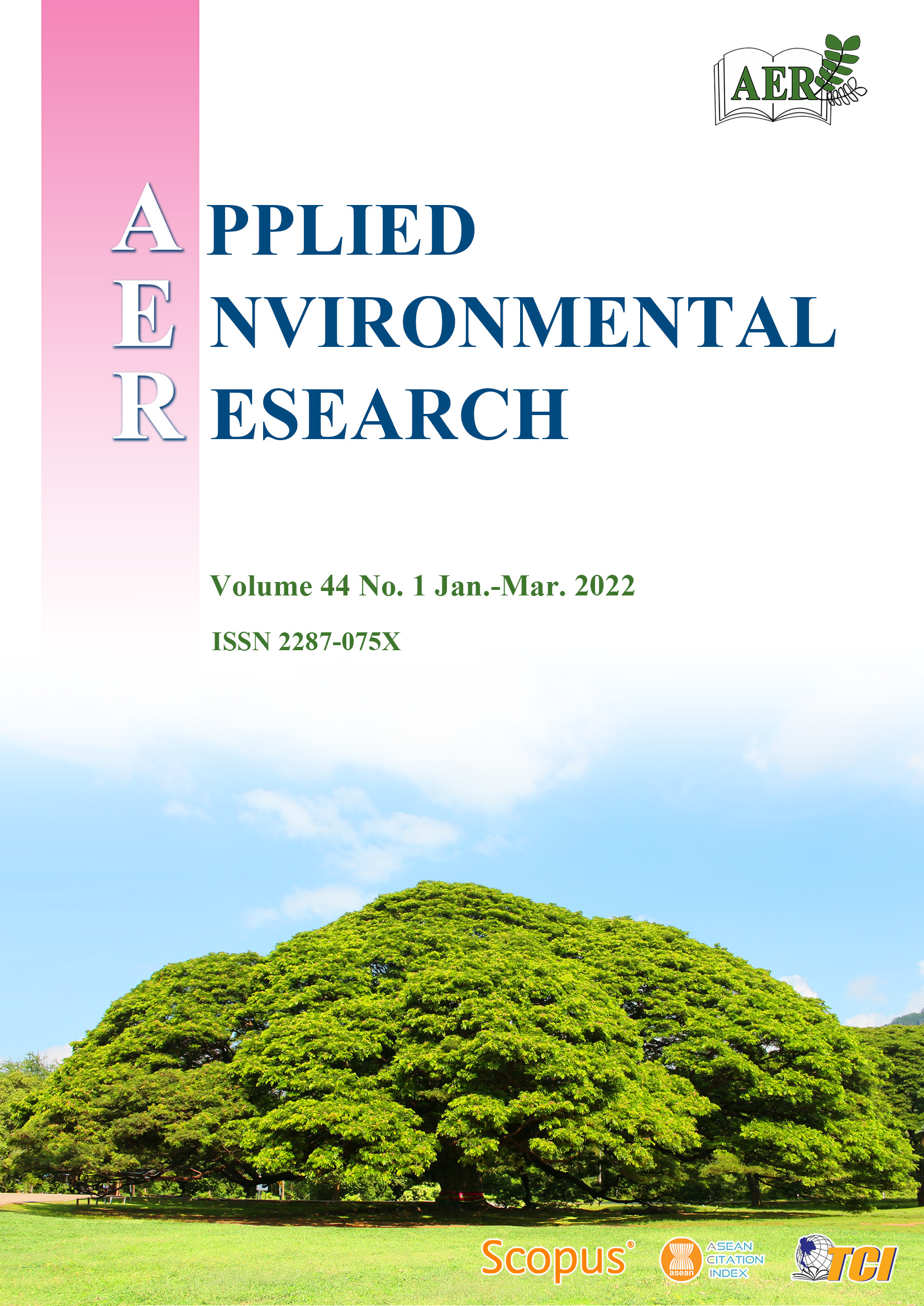Preliminary Study and First Evidence of Presence of Microplastics in Green Mussel, Perna viridis from Phuket
Main Article Content
Abstract
Plastics can reach the coastal environment and could impact the marine environment. Mussels are marine organisms which are prone to be exposed to microplastics pollution. Therefore, in this preliminary study, the commercially important green mussel (Perna viridis) collected at the Koh Phee Canal in Phuket, Phuket Province, southern peninsular Thailand, was investigated. The collected mussels from aquaculture farm fell into three age groups, namely 1 year-1 month, 1 year-7 months, and 1 year-9 months. Results from the investigation showed 200 items of microplastics present in Perna viridis with 76 items (38%) in flushed water and 124 items (62%) in the soft tissue. The average counts of microplastics in soft tissue and flushed water were 4.13 items per individual and 2.53 items per individual, respectively. Blue color (98 items, 49%) and filament shape (185 items, 92.5%) were the most common color and shape of microplastics in the mussel tissues and the flushed water. The dominant polymers as microplastics were identified as polyester and polyethylene terephthalate, which are common polymer types used in protective packaging and containers. The statistical post hoc tests showed no significant differences by age group in the microplastics accumulation in the Perna viridis (p<0.05). Further studies are required to understand the accumulation rates and residence times of microplastics across the food webs for better understanding on their impacts on human health. The results from this study provide a baseline level of microplastics contamination in green mussel aquaculture located at Phuket, and urgent measures are needed to prevent contamination of food for human consumption and related health problems.
Article Details

This work is licensed under a Creative Commons Attribution-NonCommercial 4.0 International License.
Published articles are under the copyright of the Applied Environmental Research effective when the article is accepted for publication thus granting Applied Environmental Research all rights for the work so that both parties may be protected from the consequences of unauthorized use. Partially or totally publication of an article elsewhere is possible only after the consent from the editors.

